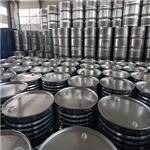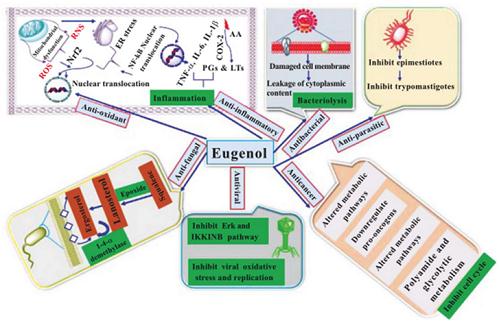Application of 1,6-Hexamethylenediamine
General description
1,6-Hexamethylenediamine, solution appears as a clear colorless liquid. Burns although some effort is required to ignite. Soluble in water. Corrosive to metals and tissue. Produces toxic oxides of nitrogen during combustion. Used to make nylon. Hexamethylenediamine, solid is a colorless crystalline solid. It is soluble in water. It is corrosive to metals and tissue. Produces toxic oxides of nitrogen during combustion. Hexane-1,6-diamine is a C6 alkane-alpha,omega-diamine. It has a role as a human xenobiotic metabolite. It derives from a hydride of a hexane. Hexamethylene diamine (1,6-diaminohexane; hexamethylenedi amine; HMD), molecular formula c6h16n2, relative molecular weight 116.20, melting point 42 ℃, boiling point 204 ℃ ~ 205 ℃, is a white flake crystal at room temperature, with ammonia odor, flammable, and small solubility in water, Insoluble in common organic solvents, such as ethanol, ether and benzene; When hexanediamine is exposed to air, it is easy to react with water vapor and carbon dioxide in the air to form insoluble carbonate. There are two nitrogen atoms containing a pair of lone pair electrons in the hexanediamine molecule, which can react with electrophilic groups, reflecting the strong alkali properties of hexanediamine. Electrophilic groups mainly include H atom in hydroxyl group, halogenated compounds and compounds that can provide H + ions. Since there are two amino groups in hexanediamine, a variety of chemical products can be obtained according to different reactants.
Application and Pharmacology
Nylon-66 and nylon-610 are the main products of hexamethylene diamine. They react with adipic acid and condense into nylon-66 products; The product is polycondensated into nylon-610 by neutralization reaction with sunflower acid, and then nylon-66 and nylon-610 are added with functional additives to produce engineering plastics, military grade and civil grade fibers. The product is a material with strong tensile and weather resistance, which can replace the traditional metal materials, and is used to make mechanical parts, mechanical stress components, the tensile longitudinal fibers inside the automobile tires used in daily life, and the tensile fibers in sporting goods. According to different properties, different types of functional additives can be added purposefully and selectively to improve and optimize the comprehensive properties of products. 1,6-hexamethylene diisocyanate (HDI) is prepared by photochemical reaction of hexamethylene diamine. HDI is a kind of aliphatic diisocyanate. Its products have many excellent properties, such as oxidation resistance, UV resistance, weathering resistance, etc., and have a broad market in polyurethane products such as coatings, adhesives, elastomers, etc.[1,2]
Synthesis
One-Pot Biocatalytic Transformation of Adipic Acid to 1,6-Hexamethylenediamine Using Carboxylic Acid Reductases and Transaminases:Production of platform chemicals from renewable feedstocks is becoming increasingly important due to concerns on environmental contamination, climate change, and depletion of fossil fuels. Adipic acid (AA), 6-aminocaproic acid (6-ACA) and 1,6-hexamethylenediamine (HMD) are key precursors for nylon synthesis, which are currently produced primarily from petroleum based feedstocks. In recent years, the biosynthesis of adipic acid from renewable feedstocks has been demonstrated using both bacterial and yeast cells. Here we report the biocatalytic conversion/transformation of AA to 6-ACA and HMD by carboxylic acid reductases (CARs) and transaminases (TAs), which involves two rounds (cascades) of reduction/amination reactions (AA → 6-ACA → HMD). Using purified wild type CARs and TAs supplemented with cofactor regenerating systems for ATP, NADPH, and amine donor, we established a one-pot enzyme cascade catalyzing up to 95% conversion of AA to 6-ACA. To increase the cascade activity for the transformation of 6-ACA to HMD, we determined the crystal structure of the CAR substrate-binding domain in complex with AMP and succinate and engineered three mutant CARs with enhanced activity against 6-ACA. In combination with TAs, the CAR L342E protein showed 50−75% conversion of 6-ACA to HMD. For the transformation of AA to HMD (via 6-ACA), the wild type CAR was combined with the L342E variant and two different TAs resulting in up to 30% conversion to HMD and 70% to 6-ACA. Our results highlight the suitability of CARs and TAs for several rounds of eduction/amination reactions in one-pot cascade systems and their potential for the biobased synthesis of terminal amines. (Nylon-6 is a homopolymer of 6-aminocaproic acid (6-ACA), whereas nylon-6,6 is a copolymer of two alternating building blocks, adipic acid (AA) and 1,6-hexamethylenediamine (HMD))[3].
Figure 1 the synthesis route of 1,6-Hexamethylenediamine
Reference
1.Lijingjing: production process and application of hexanediamine, Shanxi chemical industry, 2018, issue 03, pp. 43-45.
2.Xierui, xubaoming, chenkun: Research Progress in the synthesis process of hexanediamine, applied chemical industry, 2022, issue 03, pages 873-877.
3.Fedorchuk T. P., Khusnutdinova A. N. & Evdokimova E. et al., "One-Pot Biocatalytic Transformation of Adipic Acid to 6-Aminocaproic Acid and 1,6-Hexamethylenediamine Using Carboxylic Acid Reductases and Transaminases," Journal of the American Chemical Society, Vol.142, No.2(2020), pp.1038-1048.
);You may like
See also
Lastest Price from Hexamethylenediamine manufacturers

US $15.00/kg2024-02-27
- CAS:
- 124-09-4
- Min. Order:
- 1kg
- Purity:
- 99%
- Supply Ability:
- 5000 Ton

US $0.00/KG2023-06-29
- CAS:
- 124-09-4
- Min. Order:
- 1KG
- Purity:
- 99%
- Supply Ability:
- 50000KG/month

